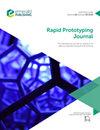用于神经外科模拟的 3D 打印头骨模型的安全性如何?钻毛刺孔时测量空气中的颗粒物和挥发性有机化合物
IF 3.4
4区 工程技术
Q1 ENGINEERING, MECHANICAL
引用次数: 0
摘要
目的用于神经外科培训的三维(3D)打印头骨正被越来越多地用于神经外科培训,原因是三维打印技术普及、成本低、精度高,以及与使用人体尸体相关的限制和伦理问题。然而,人们对在 3D 打印塑料模型中钻孔时释放的空气传播颗粒或挥发性有机化合物(VOC)的风险知之甚少。本研究旨在评估在钻毛刺孔时暴露于空气中污染物的水平。设计/方法/途径使用三种不同的材料(聚对苯二甲酸乙二酯 [PETG]、白色树脂和 BoneSTN)和三种不同的三维打印工艺(熔融长丝制造、立体光刻 [SLA] 和材料喷射)制作了三维打印头骨样本。神经外科医生对每个样品进行了 10 分钟的扩展毛刺钻孔。记录了颗粒物(PM2.5 和 PM10)的点测量值,并对空气样本中约 90 种挥发性有机化合物进行了分析。但是,白色树脂和 BoneSTN 的颗粒物质高于 PM10 的阈值,在没有个人防护设备(PPE)的情况下,长时间接触会对人体造成伤害。所有材料的挥发性有机化合物测量值均低于安全阈值,因此不会对人体造成危害。研究推荐 PETG 为安全材料,只需采取最低限度的呼吸控制措施,而树脂基材料则需要采取安全控制措施来处理空气中的微粒。本文章由计算机程序翻译,如有差异,请以英文原文为准。
How safe are 3D-printed skull models for neurosurgical simulation? Measurement of airborne particles and VOCs while burr hole drilling
Purpose
Three-dimensional (3D)printed skulls for neurosurgical training are increasingly being used due to the widespread access to 3D printing technology, their low cost and accuracy, as well as limitations and ethical concerns associated with using human cadavers. However, little is known about the risks of airborne particles or volatile organic compounds (VOCs) released while drilling into 3D-printed plastic models. The aim of this study is to assess the level of exposure to airborne contaminants while burr hole drilling.
Design/methodology/approach
3D-printed skull samples were produced using three different materials (polyethylene terephthalate glycol [PETG], white resin and BoneSTN) across three different 3D print processes (fused filament fabrication, stereolithography [SLA] and material jetting). A neurosurgeon performed extended burr hole drilling for 10 min on each sample. Spot measurements of particulate matter (PM2.5 and PM10) were recorded, and air samples were analysed for approximately 90 VOCs.
Findings
The particulate matter for PETG was found to be below the threshold value for respirable particles. However, the particulate matter for white resin and BoneSTN was found to be above the threshold value at PM10, which could be harmful for long periods of exposure without personal protective equipment (PPE). The VOC measurements for all materials were found to be below safety thresholds, and therefore not harmful.
Originality/value
To the best of the authors’ knowledge, this is the first study to evaluate the safety of 3D-printed materials for burr hole surgical drilling. It recommends PETG as a safe material requiring minimal respiratory control measures, whereas resin-based materials will require safety controls to deal with airborne particles.
求助全文
通过发布文献求助,成功后即可免费获取论文全文。
去求助
来源期刊

Rapid Prototyping Journal
工程技术-材料科学:综合
CiteScore
8.30
自引率
10.30%
发文量
137
审稿时长
4.6 months
期刊介绍:
Rapid Prototyping Journal concentrates on development in a manufacturing environment but covers applications in other areas, such as medicine and construction. All papers published in this field are scattered over a wide range of international publications, none of which actually specializes in this particular discipline, this journal is a vital resource for anyone involved in additive manufacturing. It draws together important refereed papers on all aspects of AM from distinguished sources all over the world, to give a truly international perspective on this dynamic and exciting area.
-Benchmarking – certification and qualification in AM-
Mass customisation in AM-
Design for AM-
Materials aspects-
Reviews of processes/applications-
CAD and other software aspects-
Enhancement of existing processes-
Integration with design process-
Management implications-
New AM processes-
Novel applications of AM parts-
AM for tooling-
Medical applications-
Reverse engineering in relation to AM-
Additive & Subtractive hybrid manufacturing-
Industrialisation
 求助内容:
求助内容: 应助结果提醒方式:
应助结果提醒方式:


